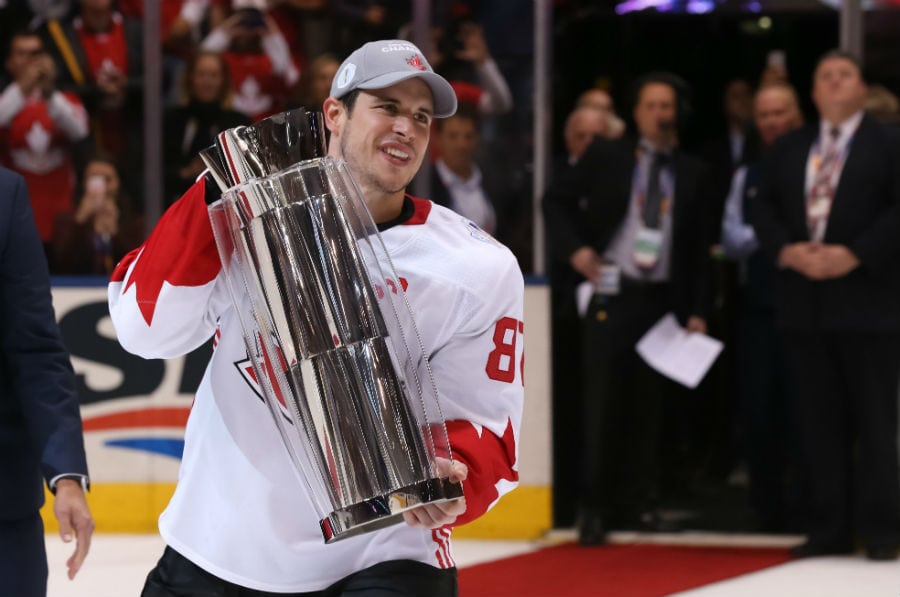
Turns out World Cup wasn't a massive cash cow for the NHL or players
The players appear to have finally decided how to split up the profits from the World Cup of Hockey. Now if there was only just a bigger pie.
 Turns out World Cup wasn't a massive cash cow for the NHL or players
Turns out World Cup wasn't a massive cash cow for the NHL or playersMultiple sources have told thn.com that the players who played in the World Cup of Hockey have agreed to be paid 70 percent of their share of the profits from the tournament, while the other 30 percent will go to the players in the NHL who didn’t play.
Each of the 184 players who was on a World Cup roster projected to to be paid between $75,000 and $80,000 (U.S.), while players who spent all 186 days on an NHL roster last season will be paid about $10,000 each. Players who were not on an NHL roster for the entire season will be paid a pro-rated amount. Players who were named to World Cup rosters and were injured before the World Cup will get less than those who played, but more than those who were not named to a roster.
On top of that, players on Team Canada will split another $500,000 in prize money for winning the tournament, with an additional $500,000 going to Hockey Canada. The players on Team Europe will split $250,000 for finishing second, with another $250,000 being split among each of the European federations that made up the team, with the amount being pro-rated based on the number of players from each federation who were members of Team Europe.
So if each player who played in the tournament is paid $80,000, that would bring the total payout to $13.1 million for those who played. If that’s 70 percent of their share of the profits, that means the players will be getting a total somewhere in the neighborhood of $18.7 million total, with the same amount going to the NHL. The final numbers have yet to be completed, but the picture is growing clearer.
So it turns out that regardless of what the final numbers are, the World Cup was not quite the cash cow that was originally predicted. A total profit of less than $40 million is significantly lower than was projected when the event was first conceived, perhaps as much as 50 percent lower. Does that mean there is room to grow for the World Cup or did both sides overestimate the revenues an event such as this one would produce? That’s probably the question that everyone on both sides are trying to figure out. From the league’s side, that total represents only a little more than $600,000 per team and that's only if the league distributes the money to the teams.
On one hand, if the World Cup is part of the international hockey strategy going forward, it might need time to grow and gain identity as an event. On the other hand, it was the first off-season best-on-best tournament in 12 years, so there should have been no shortage of hunger for the event. All the games were held in hockey-mad Toronto and we’re led to believe that all the ticket packages were sold out. But there were large swaths of empty seats, even for two-game final between Canada and Team Europe, and the luxury boxes were essentially deserted for the tournament. Tickets were sold for a small fraction of face value on the secondary market and a viewing party outside the Air Canada Centre for Game 1 of the final drew only a handful of people and was cancelled for Game 2.
It helped that the tournament did robust television numbers in Canada. The Canada-Russia semifinal game attracted 3.1 million viewers and the final was in excess of 2 million. Those numbers would have been better had Team USA, or even better, Team North America, been in the gold medal game. The numbers were not near as good with ESPN. The Canada-US round-robin game attracted 766,000 viewers, which would be good numbers for a regular-season game on NBC. Game 1 of the final had only 494,000 viewers. It didn’t help that Team USA was easily the most disappointing team in the tournament.
The NHLPA has come under some criticism for not having the revenue split worked out before the tournament, but it was decided beforehand that since it was the first time they were trying it this way, it would be best to see how the tournament did financially before deciding how to split the money. It was reported during the tournament that the Russian team thought all of the proceeds should go to the players and the Czech Republic team members thought it should be an 80/20 split. And it’s worth noting that in previous events, much of the money made on the players’ side went to the pension plan. Some agents wonder why all of the money went to the players and virtually none of it to the NHLPA for a program that would benefit the entire membership, such as a lockout war chest.
“What does Sidney Crosby need with another $80,000?” one agent asked. “And half of that will be going to the government."